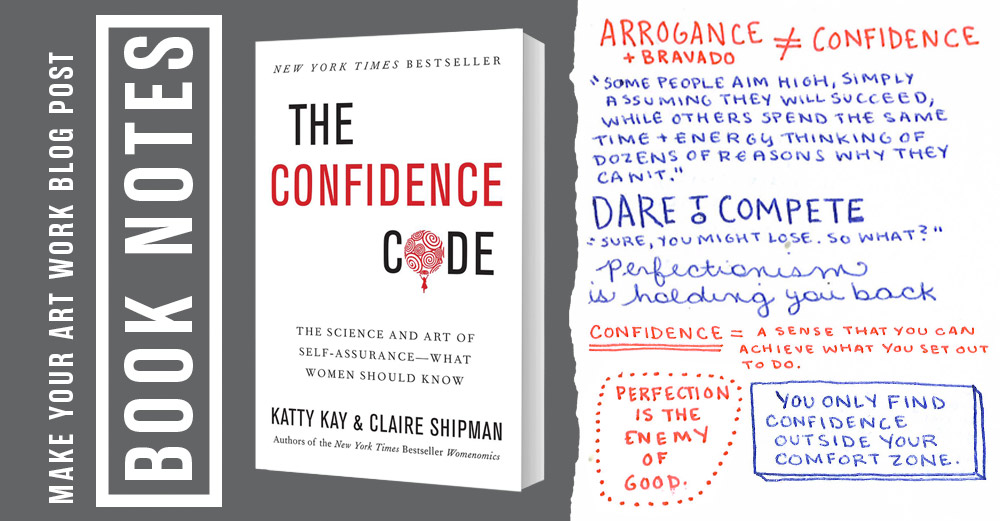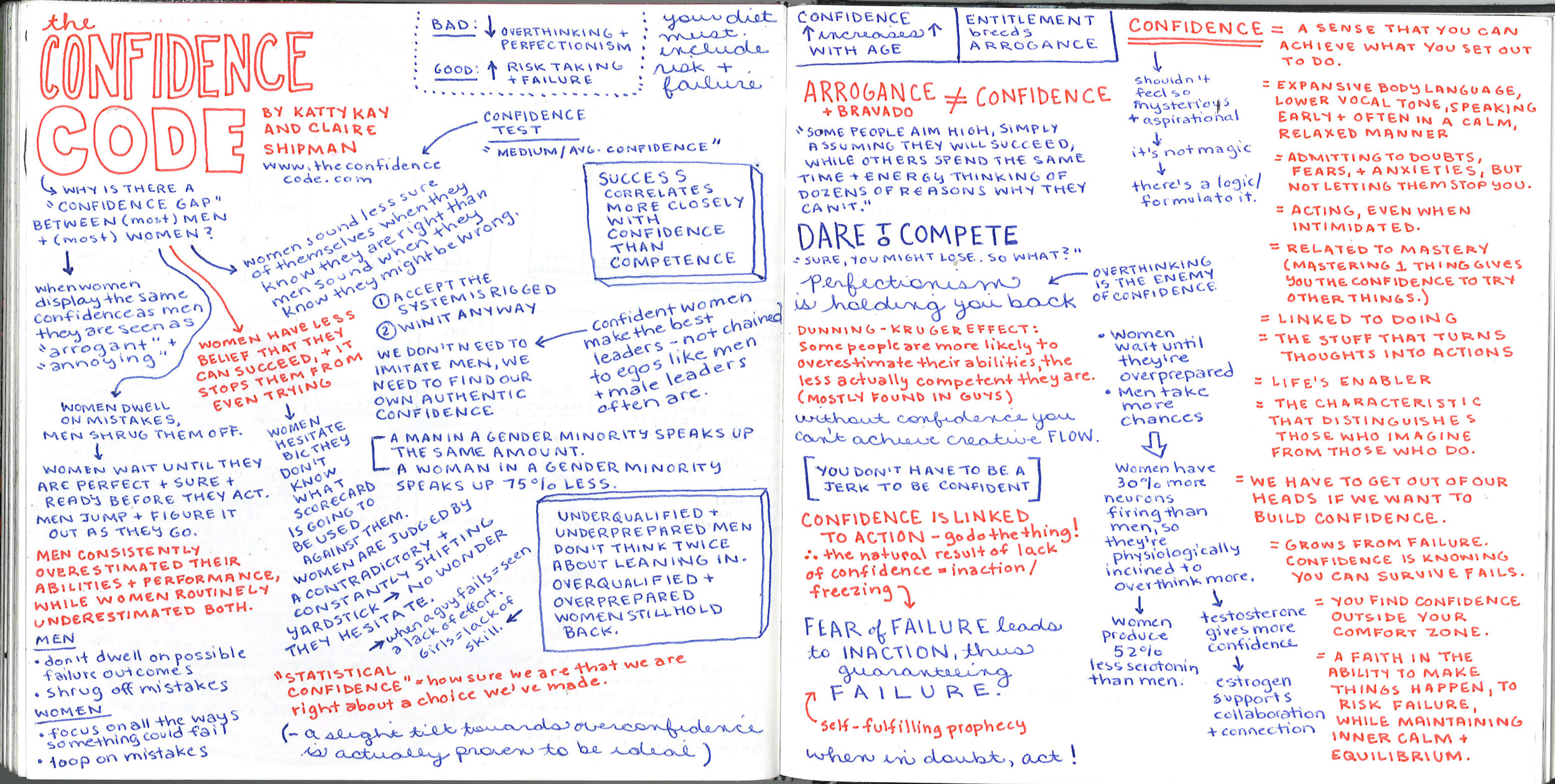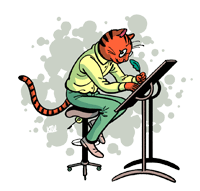
Book Notes: Where we read and condense books down to their main takeaways for creatives, with a look at our own notes from reading.
Confidence is a big issue. It’s taken on an almost magical quality. It’s definitely a buzzword. It makes things happen, it makes people want to be near you, it makes entering that roomful of strangers a breeze, right? Well, not necessarily. Confidence is often confused with extroversion, self-esteem, self-worth, and unfortunately with arrogance. So what IS confidence? Since I talk about confidence a lot with artists, I wanted to make sure I had the concept right in my own mind, and The Confidence Code is definitely the book to read on the topic.
Now before we get into the highlights, let me talk about something that I’ve been struggling with every time I discuss confidence: Gender. The Confidence Code says it’s for women directly on the cover—but it’s not just for women. Your gender expression does not alone dictate whether you have high or low confidence — your genetics, your upbringing, and the society you live in does. However, there are plenty of scientific studies that say that the majority of women have low confidence and the majority of men have high confidence. There honestly haven’t been enough studies beyond the gender binary. Please forgive me if this post tends to be a little too black and white on gender. I know more studies are underway to fill in the gaps. Regardless of our gender, it is a fact that the inherent sexism of our cultures absolutely affect us, and we are all hurt by toxic masculinity, and if you are a man who is more sensitive (in the Highly Sensitive Person definition) then it is more likely that you also struggle with confidence. As artists and creatives, we are more likely to be sensitive and empathic, and that makes us incapable of the standard dose of arrogance many men are raised with in our society. That said, there IS an undeniable gender component. But aiming these books at a female audience is much easier to market that saying “most women and some men and probably all artists and creatives” so let’s just move on. Trust me, this is as eye-opening and useful a book for men as it is for women.

Mostly what this book does is tackle confidence in a few phases:
—Defining What Confidence Is and Isn’t: Their definition is “a sense that you can achieve what you set out to do” and I think that is a great, if simplistic answer. The definition is actually helped by a deep dive into traits that are often mistaken for confidence but aren’t: Self-Esteem, Extroversion, Arrogance, Bravado, Self-Worth, etc. Then there is a great section on what we think is confidence vs. what “authentic confidence” is — spoiler, it’s different in each of us.
—Societal and Genetic Impacts on Confidence: This got really interesting because I would never have imagined how much genetics play a role. The kinds of genes we hold for Dopamine, Oxytocin, and Serotonin have a dramatic effect on how naturally confident we are. And although that can sound limiting, and I didn’t want to believe it at first (nor did the authors), their explanations make a lot of sense, and are really helpful in reframing what we think confidence actually is.
—How to Grow Your Confidence: The most important part of the book, but also the part you have probably heard before. There are no secrets here. Every buzzword and positive mantra is here: Fail Forward and What’s The Worst That Can Happen and Perfection is the Enemy of Good — but what is very effective here is how the authors explain these concepts. They’re not just mantras, they go into why failing builds confidence, and why some of us have a tendency to overthink and be perfectionists. They take a lot of phrases you’ve heard a thousand times and know you should be following, but make it easier to understand why they work for once, instead of just blindly accepting that they do.

I found this book to be very helpful in getting all the latest confidence research into one place and giving you an overview of how all the factors going into your confidence fit together. Then it gives you the reasoning and tools to change it. No matter what gender you are, if you struggle with confidence (and even if you don’t and you worry that you come off as too arrogant) this is the book to read. And if you are raising young people please please read this book because there are so many ways to start to instill confidence in them now, no matter what age they’re at.
Buy The Book Here: The Confidence Code
——————-
Background on the “notes” part of Book Notes: When I am reading a book, I am a obsessive underliner (especially of non-fiction books). After I’m done, I copy anything I want to remember into my sketchbook. It’s kind of like making personal cliffs notes. This column started because many of the people who have seen my sketchbooks over the years wanted access to some of the pages on books they were interested in. Since I am reading books through the lens of an artist, I wanted to start sharing these notes and condensed reviews with other artists. If you like the tone of the notes, then you’ll know it’ll be worth it to pick up the book.
SaveSave





I love your book notes!! This is really helpful, thank you!
Great notes! I’ll probably snag a copy of the book.
I took the quiz and got a “medium confidence”. I’ll take it! I can still work on this but not a bad base at all.
Thank you for recommending this book and for your excellent notes! “You only find confidence outside your comfort zone” is my new mantra, and I’m sticking it on a post-it to my cintiq. I’m going to pick up the book right now.